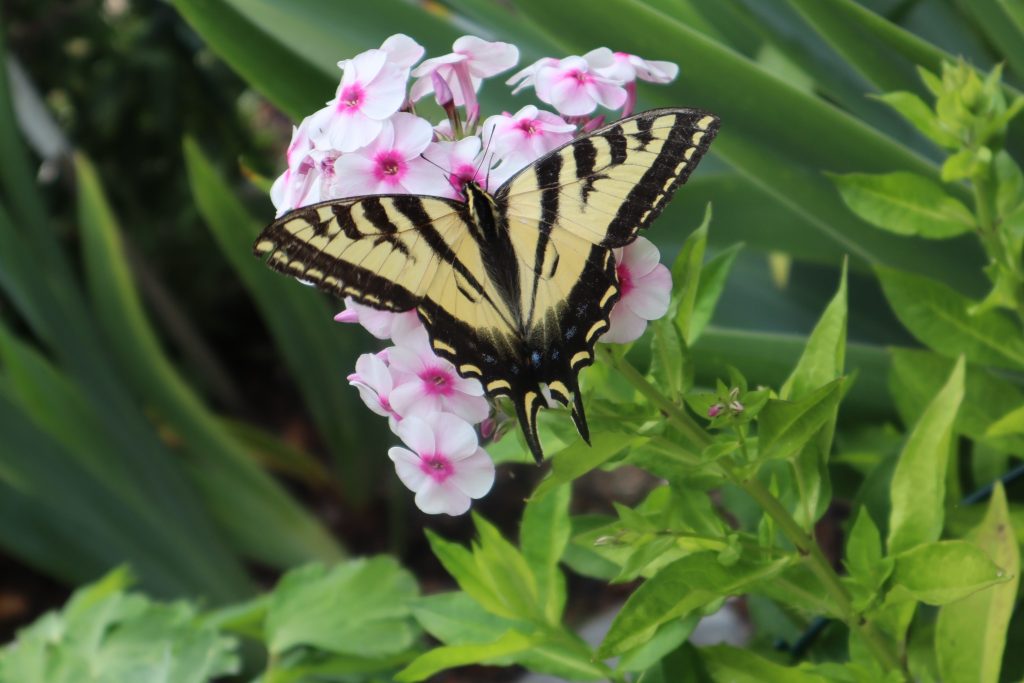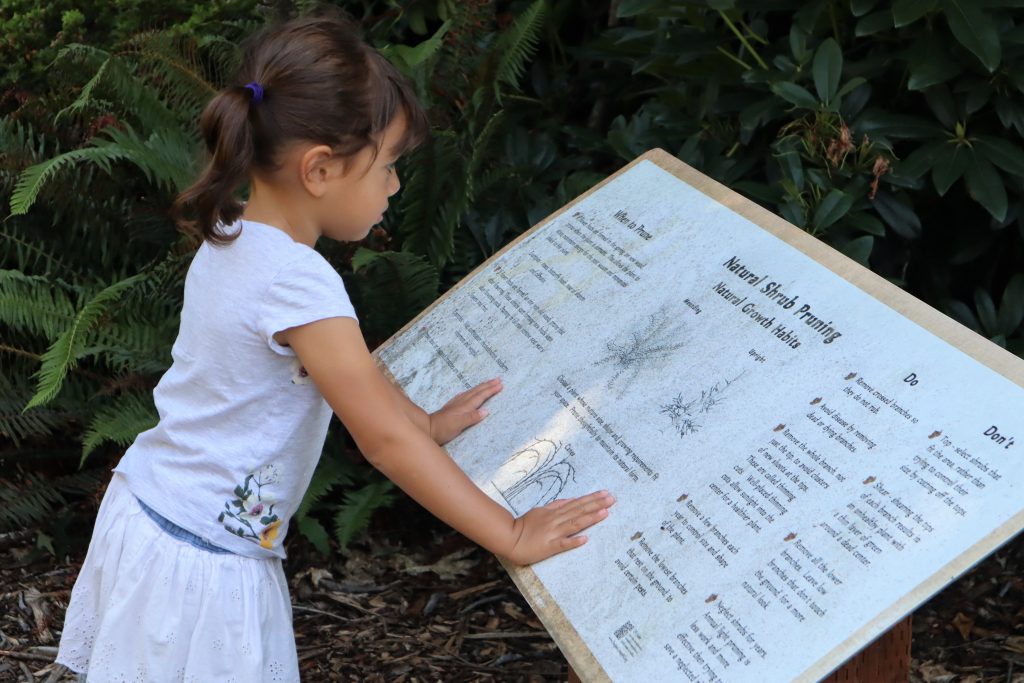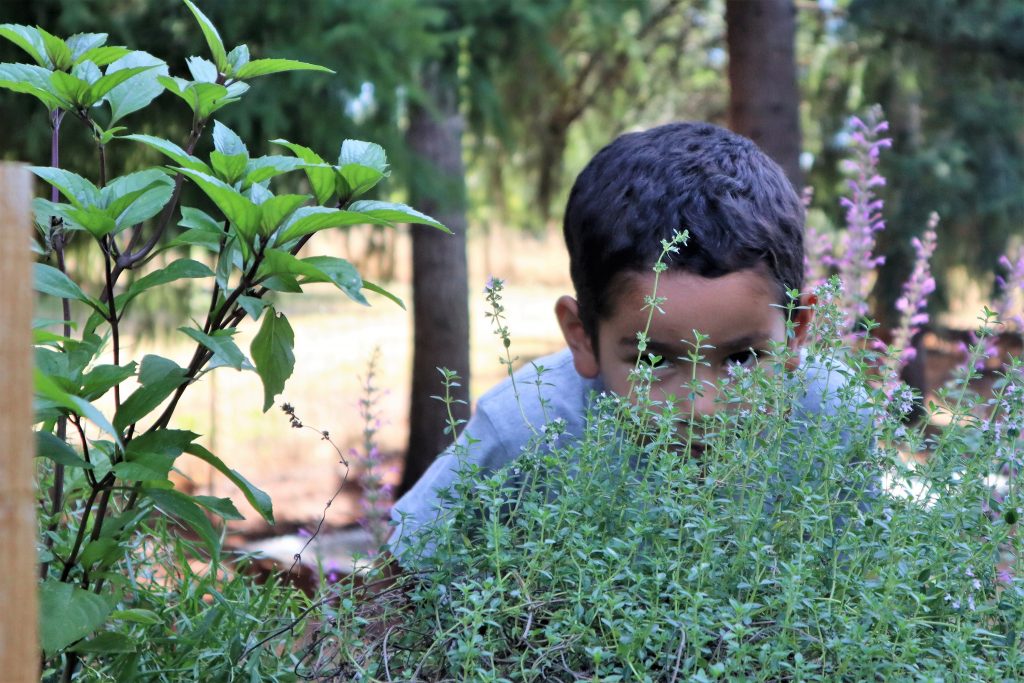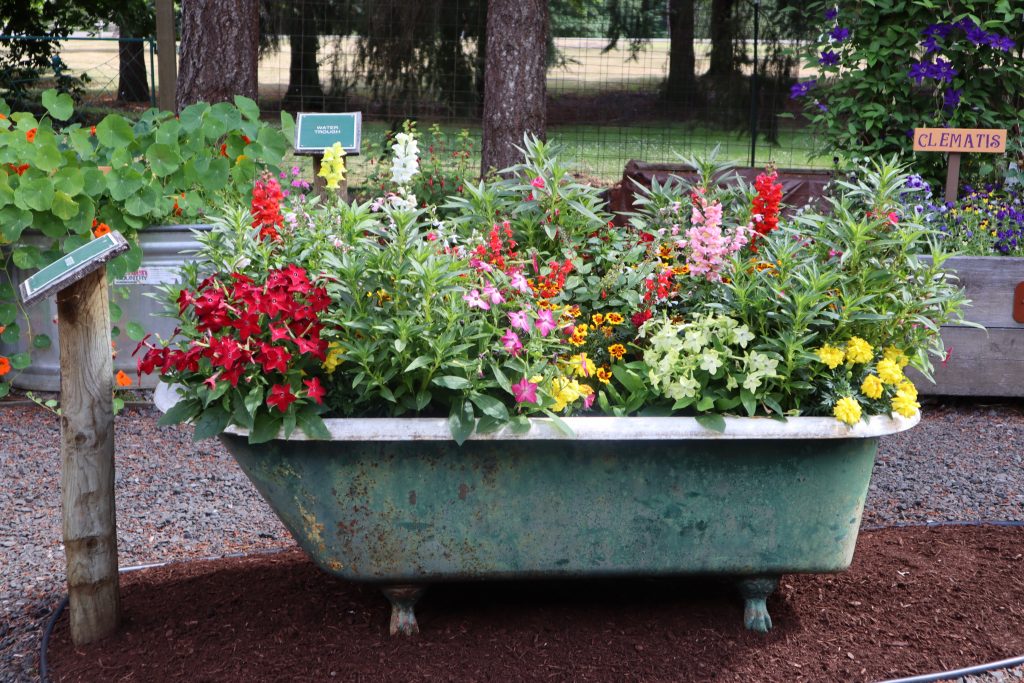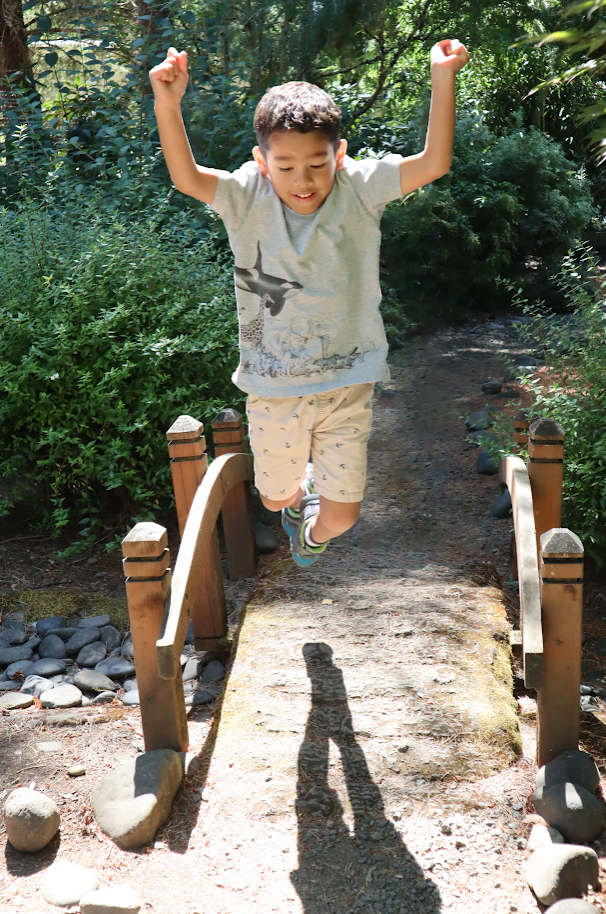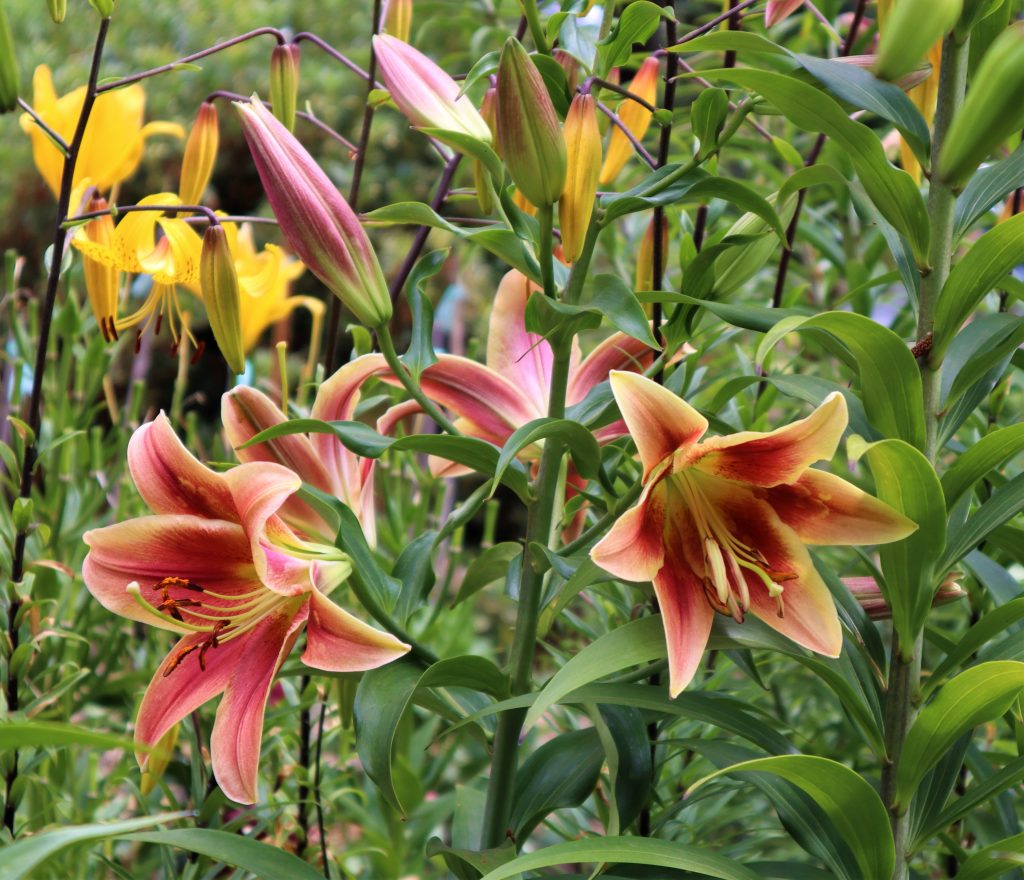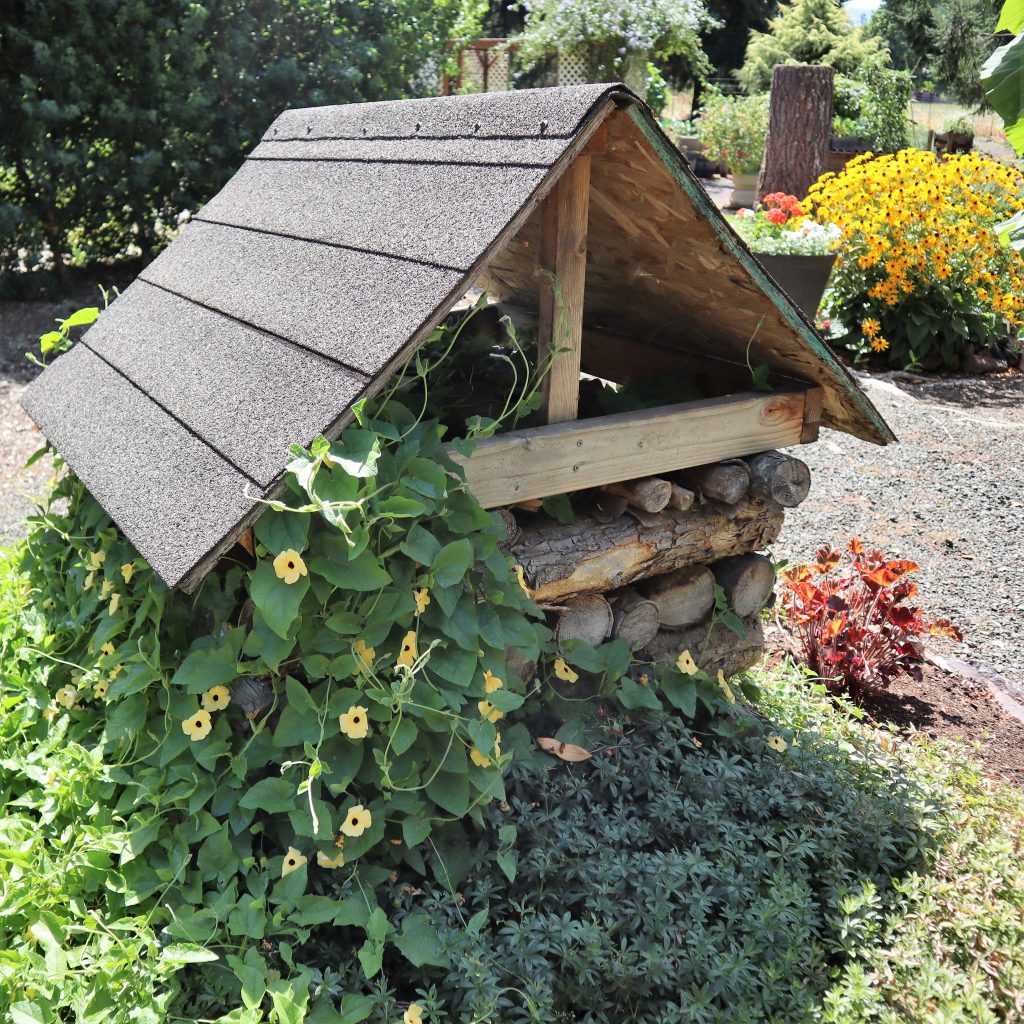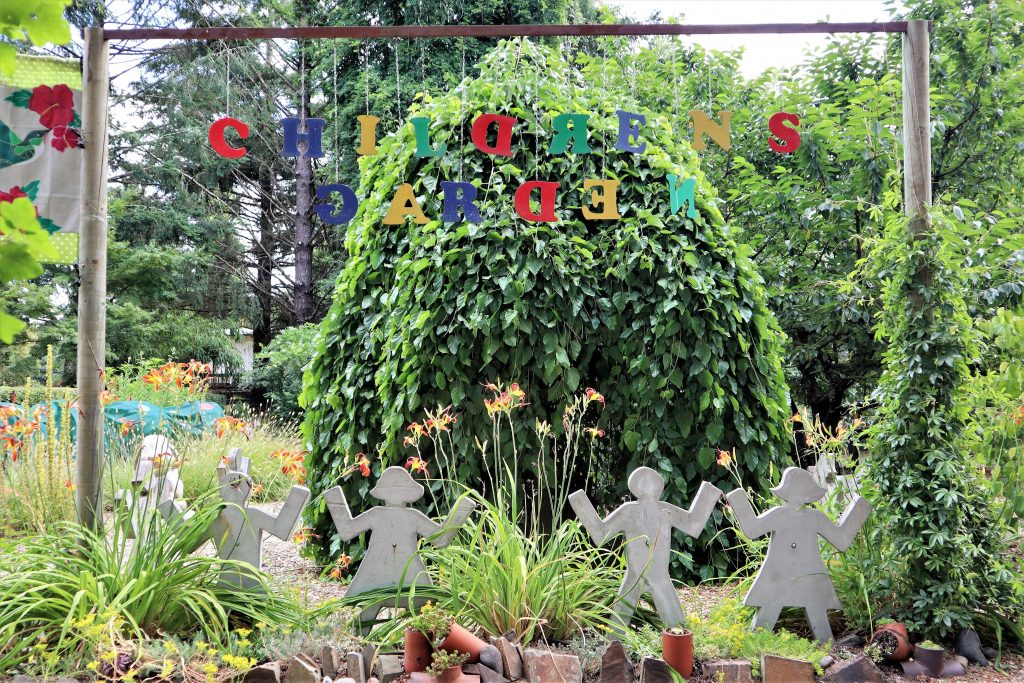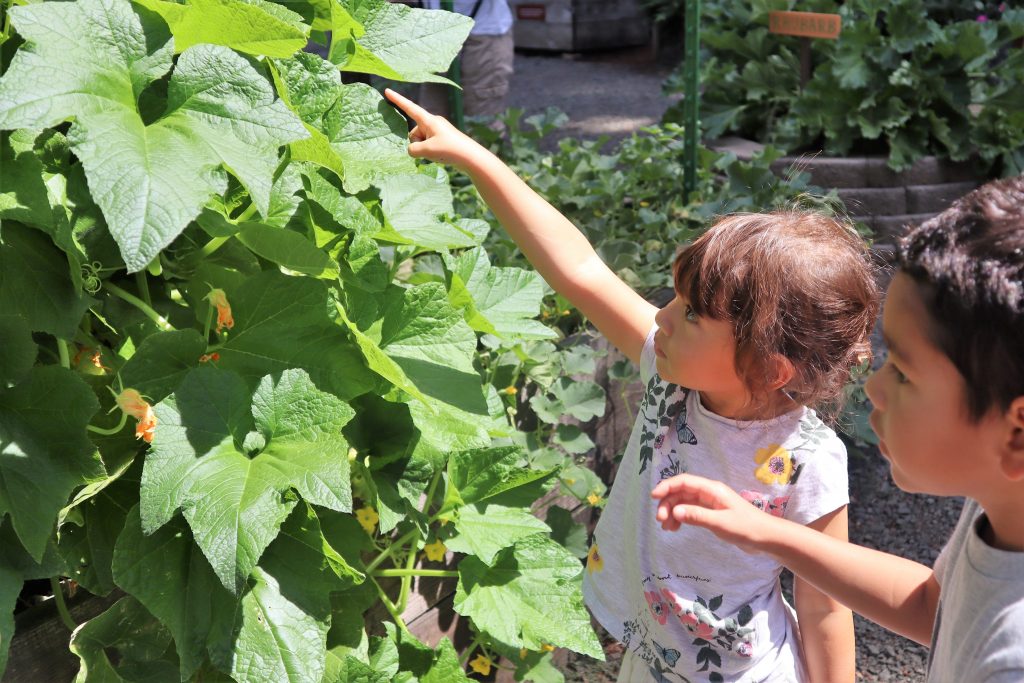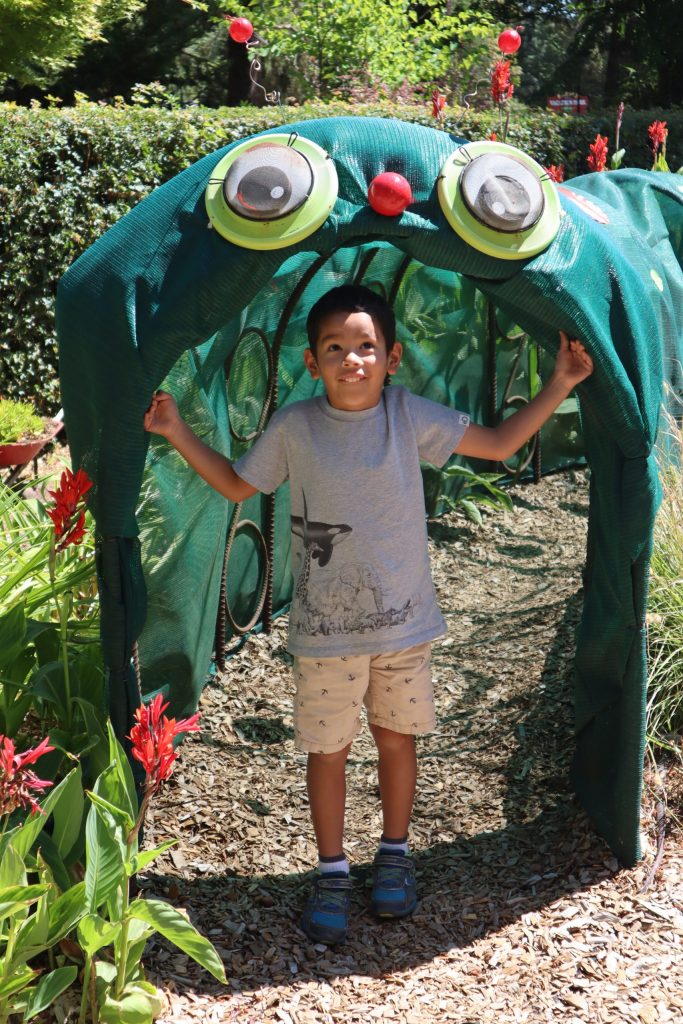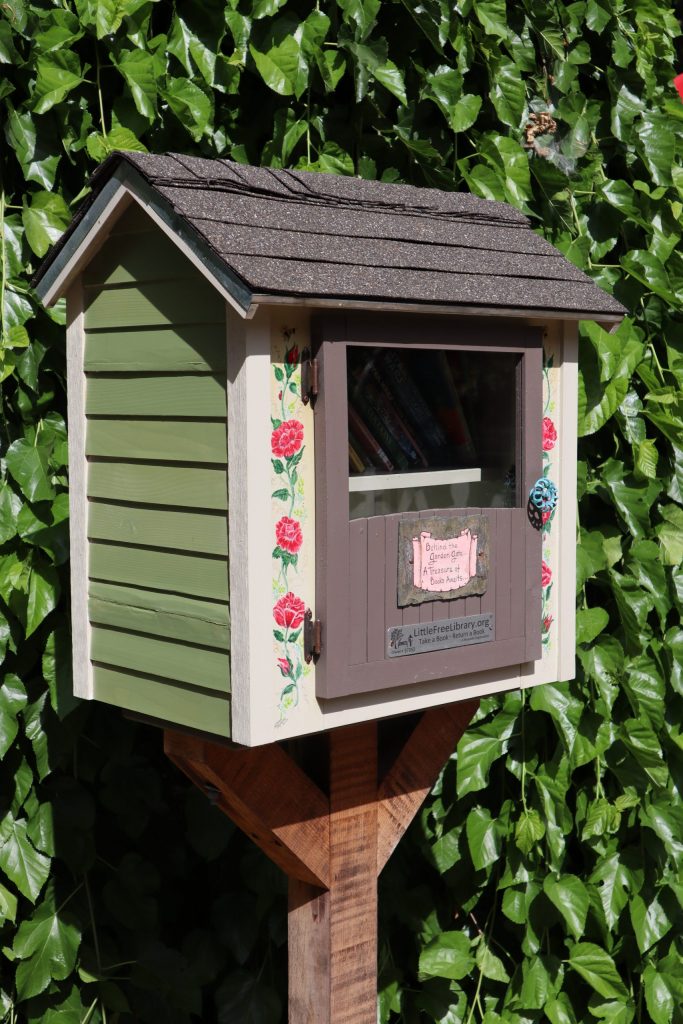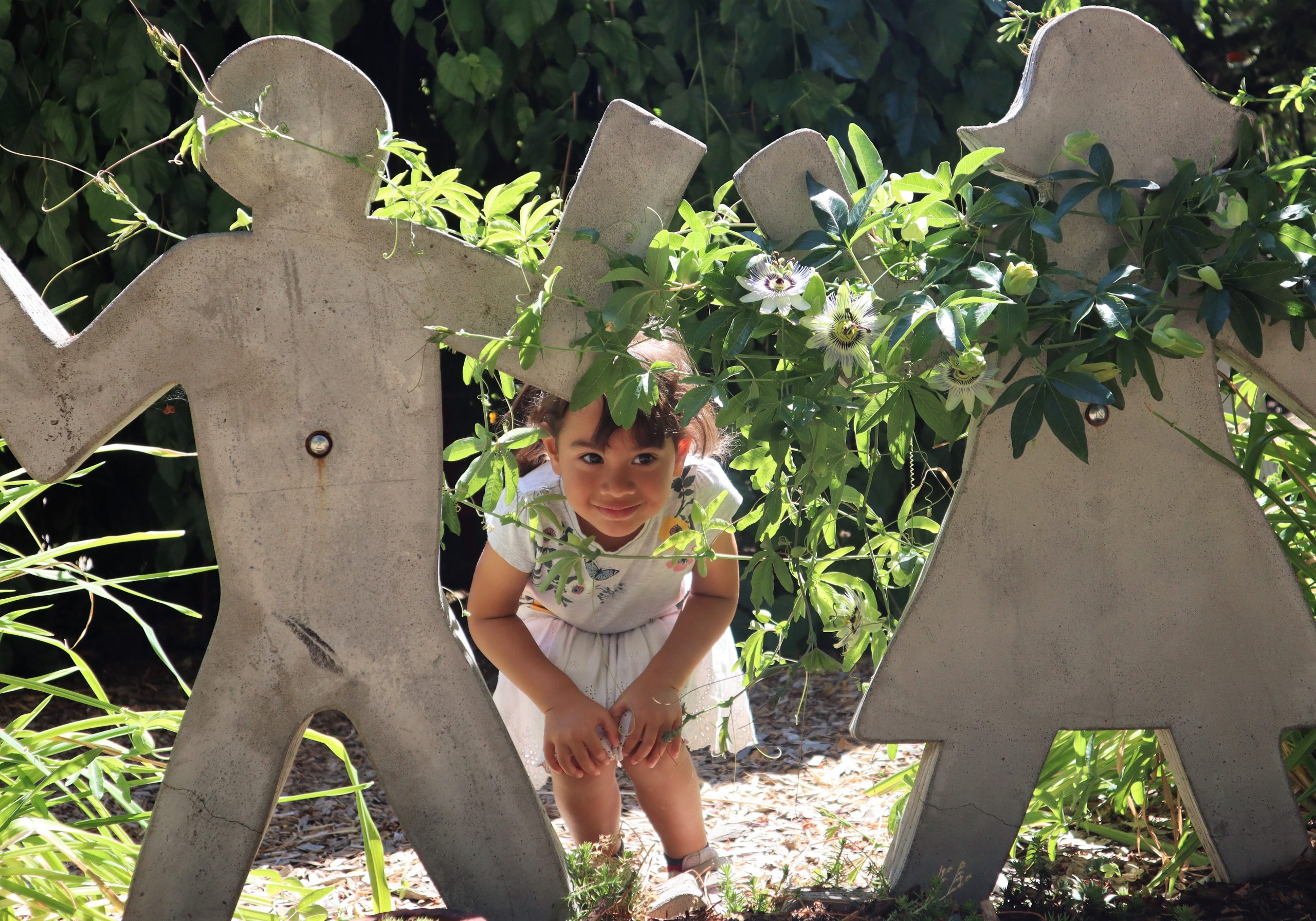
In 1999, 238 River Forks Park Road was just an empty, run-down cow pasture. The Oregon State University Douglas County Master Gardeners spoke to the Douglas County Parks Department and decided they could make the land into an educational garden. Over the years, thousands of hours have been put into it. The vast majority of the work has been done by the volunteers. Julie Stanbery, Master Gardener of 29 years and President of the Master Gardeners, said, “It’s a labor of love.”
Now, there are more than 20 separate small garden sections. The gardens teach people what can and can’t be grown in Douglas County. Each of the garden sections has a garden head. You become one because you are either an expert or you want to learn.
“We are not always successful but that’s part of what we want to teach people,” Stanbery said. “Everything is done following OSU guidelines as far as chemicals, sustainability, and plant selection. We don’t choose invasive plants and we try to choose proper plants for this climate.”
If you have questions about your home garden or are interested in enrolling in the Master Gardener program, contact the OSU Extension Service at 541-672-4661.
There is a lot to experience in the garden. On the east end is the Japanese garden which offers a pleasant place to relax. One of the unique features here is the “peace tree”. The Ginkgo Biloba tree, planted this year, is a descendant from a Japanese tree that survived the 1945 Hiroshima atomic bombing.
On the west side is a rock garden which contains a wide variety of succulents. Near the rock garden is the easy access garden which is full of fruits, vegetables, and herbs. The food grown in this garden all gets donated to United Community Action Network.
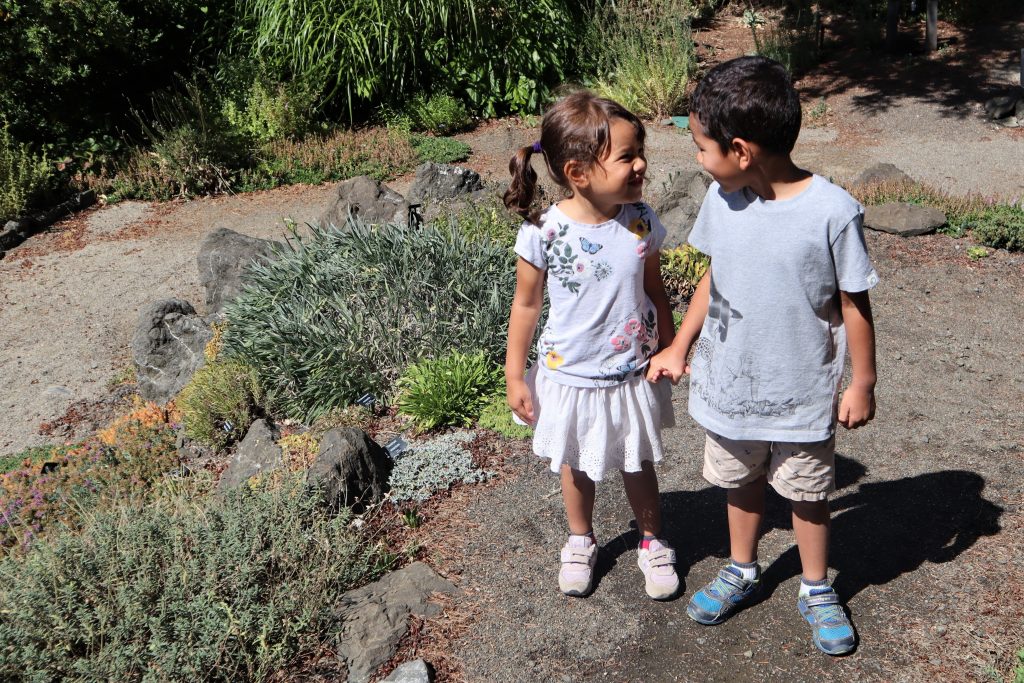
Another popular spot is the children’s garden. Located just left of the main entrance, you will find a brightly colored caterpillar tunnel, a yellow-brick road, and rows of concrete “paper” doll chains. It also includes a lending library and plenty of spots to sit and read while being surrounded by nature.
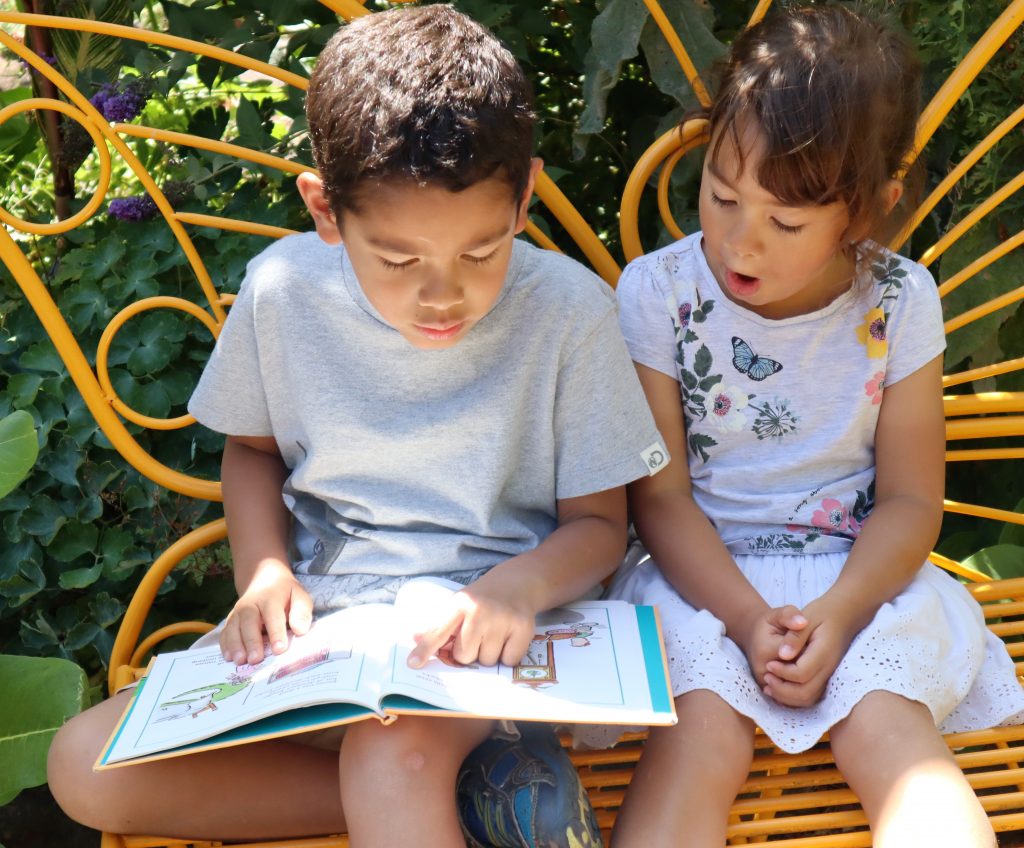
Every part of the garden is filled with learning opportunities. In front of nearly every plant or structure, there is a sign telling you information about it. While walking around you’ll see herbs, fruits, vegetables, trees, shrubs, flowers, insects, animals, and more. Stanbery adds that people can get an education just by walking around and identifying flowers and insects. The garden is open every day and is free to the public. There is a county parks fee for parking.
The hope is to have even more educational activities once the pandemic is over. Stanbery said, “We want to continue education in the future. If we ever go back to normal we want more classes out here with children and adults.”
Due to limited space and COVID-19 reducing its funding opportunities, the garden is currently in maintenance mode.
“We like to do hands-on training for people because if you go into the extension office and you get a brochure and one of the master gardeners tries to verbally explain to you how to prune a tree, you can do it,” Stanbery said. “You can do it just like looking at a YouTube video, but YouTube videos aren’t research-based and our information from OSU is. At least if you have the brochure you can refer and know that you’re relying on something that’s research-based, but if you come out and do it, it’s a whole different experience.”
Outside the garden, there is a sign that outlines how to show respect to the garden. Master Gardeners urge us to remember that this is an educational garden, not a playground. Secondly, they are also in need of donations of supplies or funding. If you’d like to help, contact the OSU Extension office.
Bill Fuller, Master Gardener for 8 years, said, “The garden is the showcase to demonstrate what can be accomplished with technical knowledge, mental and physical labor, and mutual purpose to produce an asset to the community for all to enjoy and learn from.”
